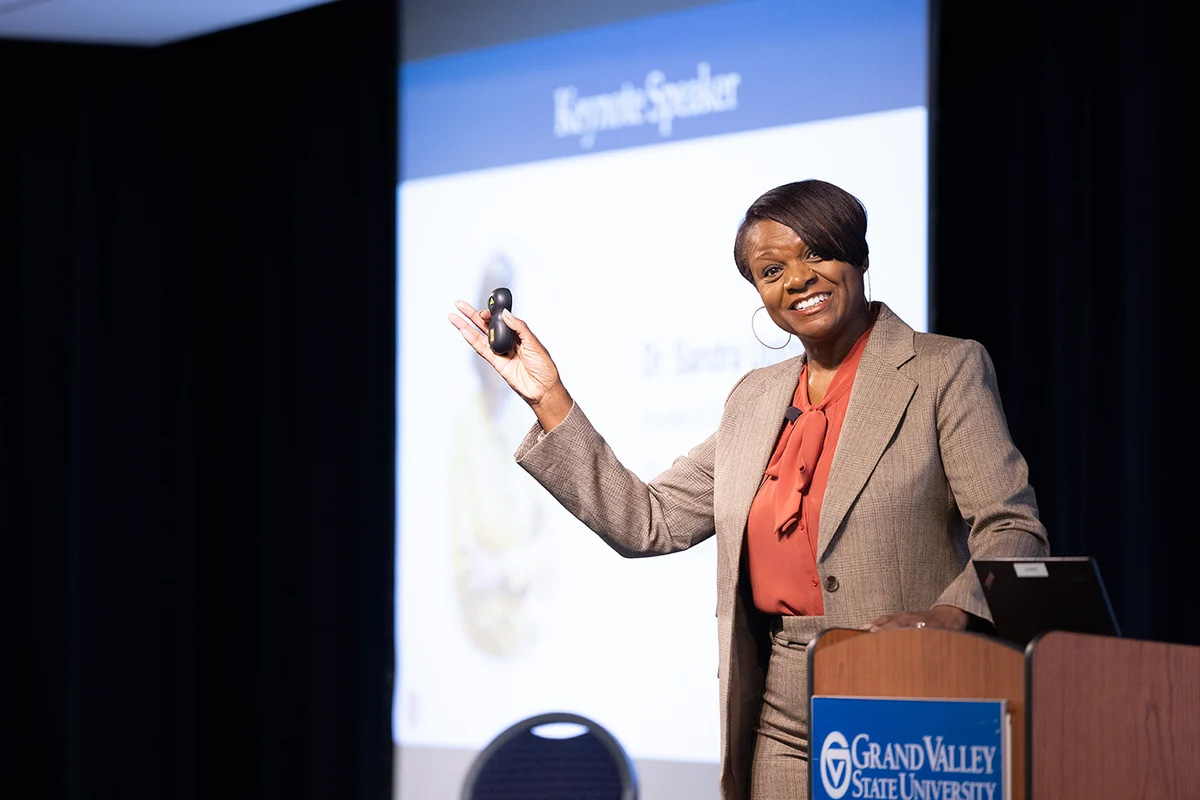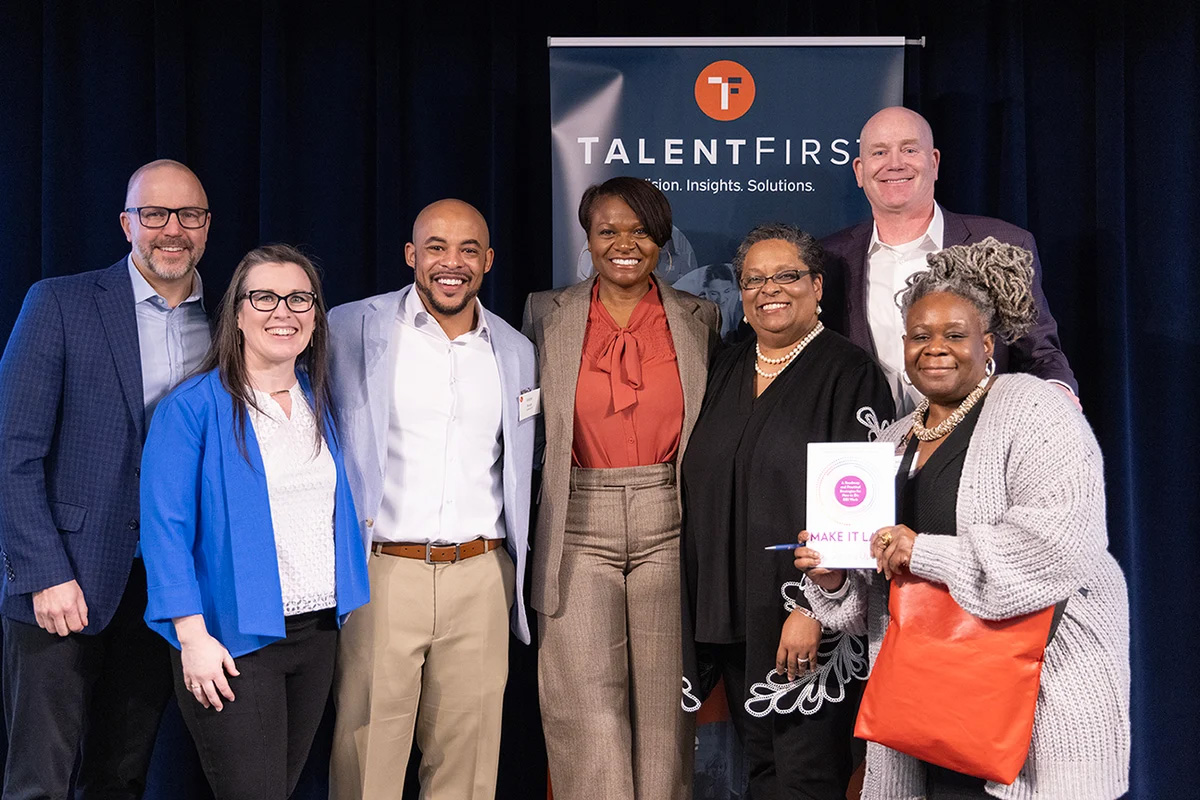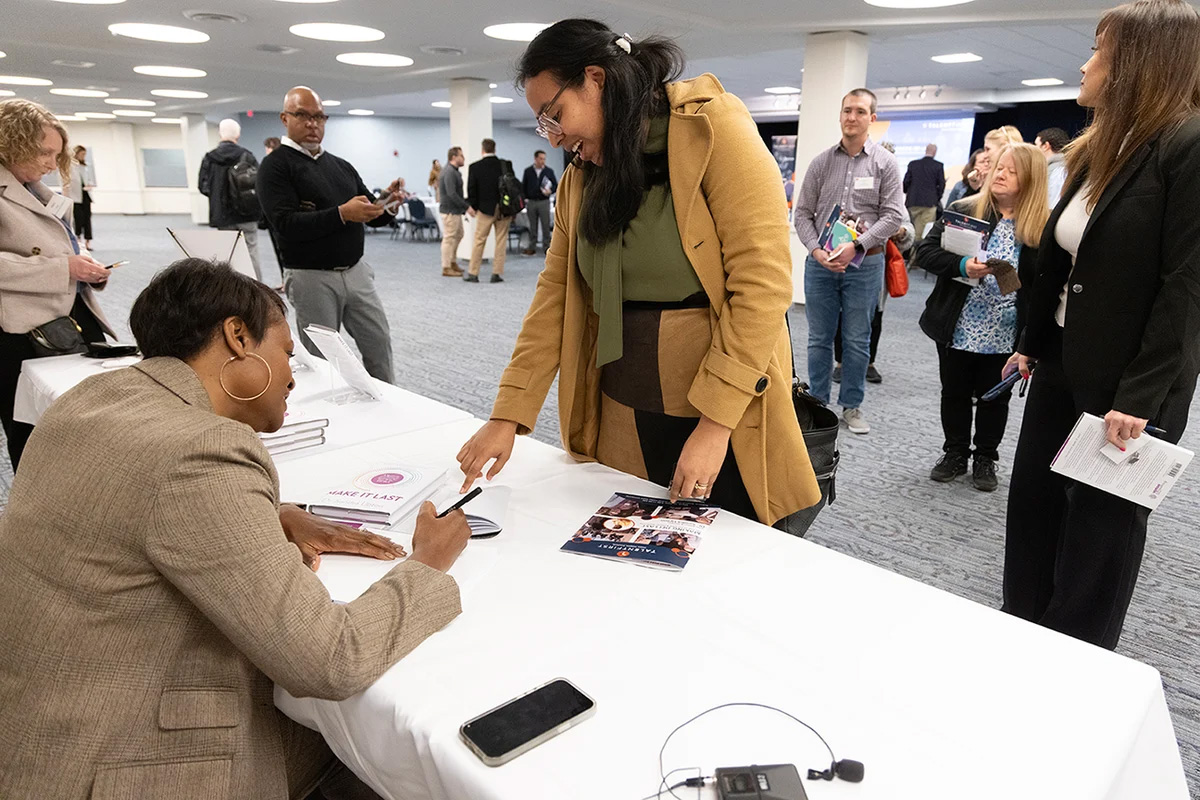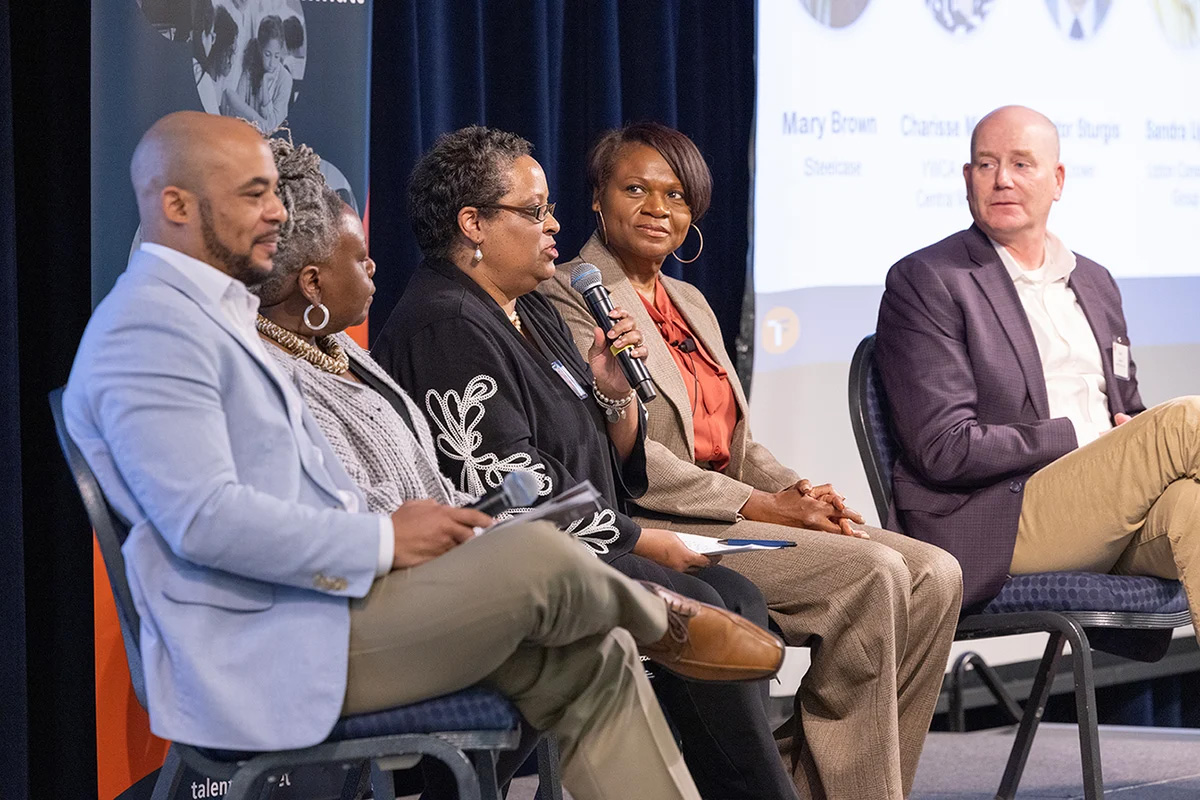Most organizational transformations fail. Those that succeed follow a change management process with senior leaders setting the vision and showing the way. And that’s what is needed for diversity, equity and inclusion efforts that last.
Dr. Sandra Upton, founder and chief DEI strategist with Upton Consulting Group, shared these insights — and her process for leading DEI change — during her keynote address at our Inclusive Leadership Development event this week.
Upton was joined panelists Mary Brown, Senior Culture Consultant, Steelcase; Charisse Mitchell, CEO, YWCA West Central Michigan; Victor Sturgis, Partner + ESG Tax Services Leader, Crowe; and Mark J. Wassink, Managing Partner, Warner Norcross+Judd. The group shared their organization’s own experience on the DEI journey and fielded questions from the audience.
The overall sentiment of the day was that organizations continue to seek progress in DEI, despite facing headwinds. Upton acknowledged recent challenges, such as the uncertainty that followed the 2023 Supreme Court ruling that ended affirmative action in college admissions. But she urged the group to not lose hope.
“I want us to all say this together. DEI is not dead, right? It is not dead despite everything that we are hearing and seeing almost on a daily basis in terms of the backlash,” she said. “And not to minimize or pretend or be delusional about the backlash, but a lot of times we don’t hear the good things that are still continuing to happen.”
Upton cited a recent survey of 194 chief human resource officers by The Conference Board, which found that none planned to scale back DEI initiatives, programs or policies. What’s more, Upton said, resistance is a sign of progress.
“If you’re not making progress, who cares? No one’s paying any attention. But we are making some kind of progress. We have a lot of work to do and we’re going to talk about some things that we can do to keep moving the work forward in substantive and sustainable ways.”
It’s All About Change Management
“We know that if we follow evidence-based change management practices, we can really create substantive change,” said Upton, who earlier this year released her book, Make It Last: A Roadmap and Practical Strategies for How to Do DEI Work.
In her keynote address, she walked the audience through her DEI PropelTM Framework, which adapts DEI to John Kotter’s 8 Steps for Leading Change.
She noted that Kotter’s research has found that most massive transformation efforts fail because they don’t follow a process. That’s why senior leaders must see themselves as more than allies of DEI work, she said.
“You need to see yourselves as change leaders. Your mindset needs to shift and say, ‘I’m part of this movement and part of this work requires me to help lead this work and create the kind of change that is going to allow for real transformation in our organization.’”
The Eight Steps of the Framework
Upton outlined the steps of DEI transformation included in her book and invited the audience to assess where their organizations are on that journey.
1. Decide this can’t wait
“If you are not clear on the why your organization needs to be committed to this, then you’re going to be challenged. … Does everyone across the organization understand that we are doing this work? That it is imperative that we do it, and if we don’t do it, here are the consequences to not doing that?”
2. Build your tribe
“Once everyone is on board, decide how you are going to organize yourself to get the work done.”
3. Map the route
The reason most transformations fail is that they jump to this step without the foundation of the first two, Upton said.
“They have not taken the time to get the buy-in at Step 1 and help people understand the why and the what. And they’ve not taken the time to think through how they’re going to organize (Step 2) or govern themselves to do the work effectively.”
4. Share your DEI plan
A strong communication strategy is needed parallel to the DEI strategy, she said.
“I see leaders get so frustrated because they’ll do a survey and the survey will come back and employees will say, ‘Oh, we’re doing DEI? I didn’t know we were doing it.’ … Maybe we’ve done a good job of step one, two, and three and we put together a solid strategy that’s outcome driven, but we’ve done an awful job of communicating it. And so, that’s a step in and of itself.”
5. Equip the superheroes
This step requires giving people, including senior leaders, the skills and resources they need for the work, Upton said.
“We can’t get frustrated when people resist. … Part of why people resist is because they’re afraid they don’t know what to do. Or, for people who are not resisting, you still don’t get the best out of them because we’ve not taken the time to upskill them.”
6. Plan DEI victories
It’s important to build wins into the journey, she said.
“Everybody wants to be a part of something that they feel is working where you’re seeing progress. And so, it’s really important as part of your strategy, if you’re moving this work forward, you have to plan for victories.
7. Use the snowball effect
Once the work is moving in the right direction, it’s time to step up efforts and take the work deeper, she said.
“That is huge in terms of keeping the momentum going, keeping people engaged in the work and committing to moving the work forward.
8. Make DEI last
The goal is to reach a point where you can honestly say DEI is part of the DNA of the organization.
“Even when you get to Step 8, you’re never done because it’s a journey. You always are circling back, but at least you’ve got a guide to know that these are the eight important steps.”
Upton noted the importance of having measurements in place so that every aspect of the strategy has a metric attached to it.
For organizations looking to get started, TalentFirst conducts a Diversity and Inclusion Benchmark Survey. The survey measures 14 best practices and provides participants with confidential insights to their cultural and demographic landscape. We also publish anonymized, aggregate data for the whole region on our DE&I Best Practices Dashboard.
The goal is to track progress of our region because we cannot attain our goal of being among the top 20% of regions for workforce quality unless we attract, develop and retain diverse talent. As Upton said, it’s essential to drive transformation that endures.
“When we think about DEI, at the end of the day, it’s all about change,” she said. “We are simply trying to change behaviors and we’re trying to change systems. And both have to happen if we are going to move the work forward in a way where it lasts, where it is substantive and it is sustainable.”
Learn more about TalentFirst events.






